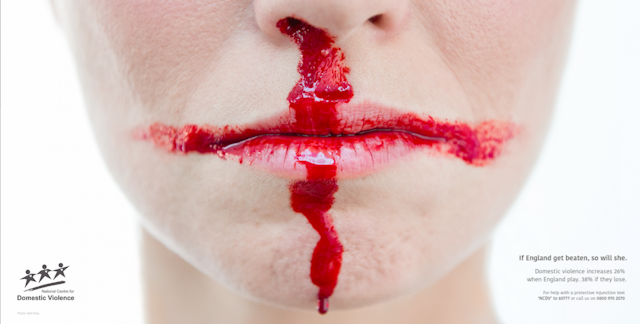Historically, football has always been associated with aggression and violence. Since its emergence in the 14th century, the game “on the pitch” has been gentrified. The FIFA World Cup epitomises this evolution, bringing together some of the world’s best athletes who, representing their country of origin, are pitched together in intense competition.
But during this time, the violence “off the pitch” has intensified. In many countries across Europe, supporters wearing national team colours have engaged in pitched battles both inside and outside stadiums. During the Euro 2016 football tournament, a new wave of violence began, as “trained” Russian hooligans battled the English in France, equipped with mixed martial arts gloves and gum shields.
Many studies have highlighted the violence which occurs near football stadiums. But further research shows that even watching football on the TV can be associated with violence. One study on the 2010 World Cup found that there was a 37.5% rise in admission rates across 15 accident and emergency departments on England match days.
Major football matches have also been linked to increased violence in the home. A campaign by the National Centre for Domestic Violence draws on findings of a 2013 study we conducted with our colleague Rosie O'Flaherty.
Examining reports of domestic abuse in Lancashire (a county of approximately 1.5m people in Northern England), across the 2002, 2006 and 2010 World Cup tournaments, we discovered a 26% increase in reports of domestic abuse when England won or drew, and a 38% increase when England lost. Reports were also more frequent on weekends, and reached their peak when England exited the tournament.

Put simply, academics account for domestic abuse using individual or social explanations. Individual accounts suggest domestic abuse comes from individuals who lash out due to their inability to deal with anger or frustration, the consumption of drugs or alcohol, or because they witnessed the behaviour in others. Social explanations focus on wider cultural factors, such as the imbalance of power between men and women.
What causes abuse?
Both explanations are relevant, when it comes to watching football. The World Cup brings with it emotional and situational stressors, which create a perfect storm with regard to incidents of domestic abuse. The pastime has been associated with a surge in testosterone levels, which some researchers have linked to aggressive behaviour. Supporters approach each match with a strong cultural identity, so they internalise wins and losses.
The month-long competition means there are more arguments between partners about what to watch on the television. Matches often take place on weekends and on exceptionally warm days, which again are associated with increases of violence. And the tournament is heavily marketed, with many retailers and caterers taking the opportunity to increase alcohol sales – another factor closely associated with domestic violence.
This doesn’t just apply to soccer – researchers found that men were involved in 10% more violence against their female partner if their team lost an American National Football League game. And a further study found that husbands and wives argued most over which television programmes to watch when sports were being broadcast.
Almost 20m watched England beat Sweden in the recent quarter final – and a record global audience of 3.4 billion is expected to watch at least one game either on the TV or online. Our study found that the reports of domestic violence grew worse tournament by tournament. So while England’s extended run in the 2018 competition brings national joy for many English people, some still live in dread of match days.
More evidence-based articles about football and the World Cup:

